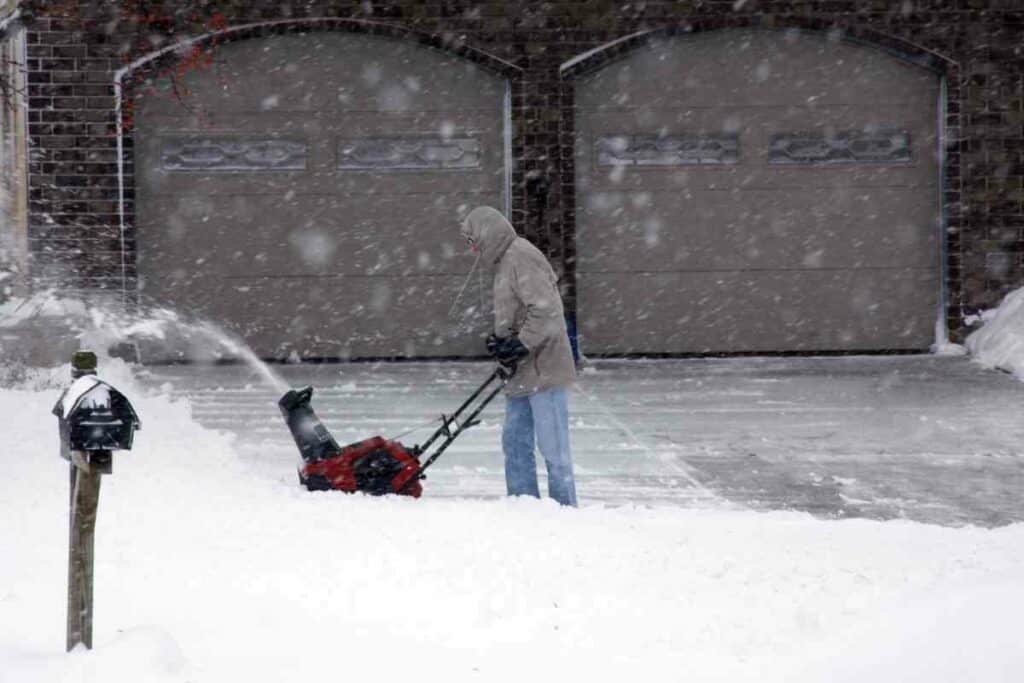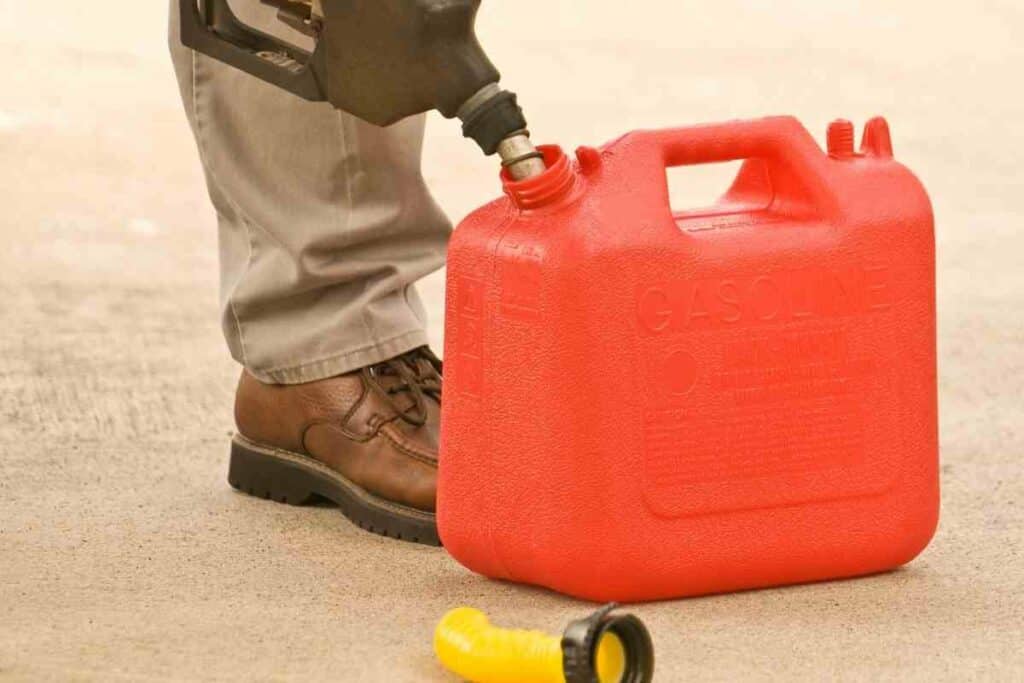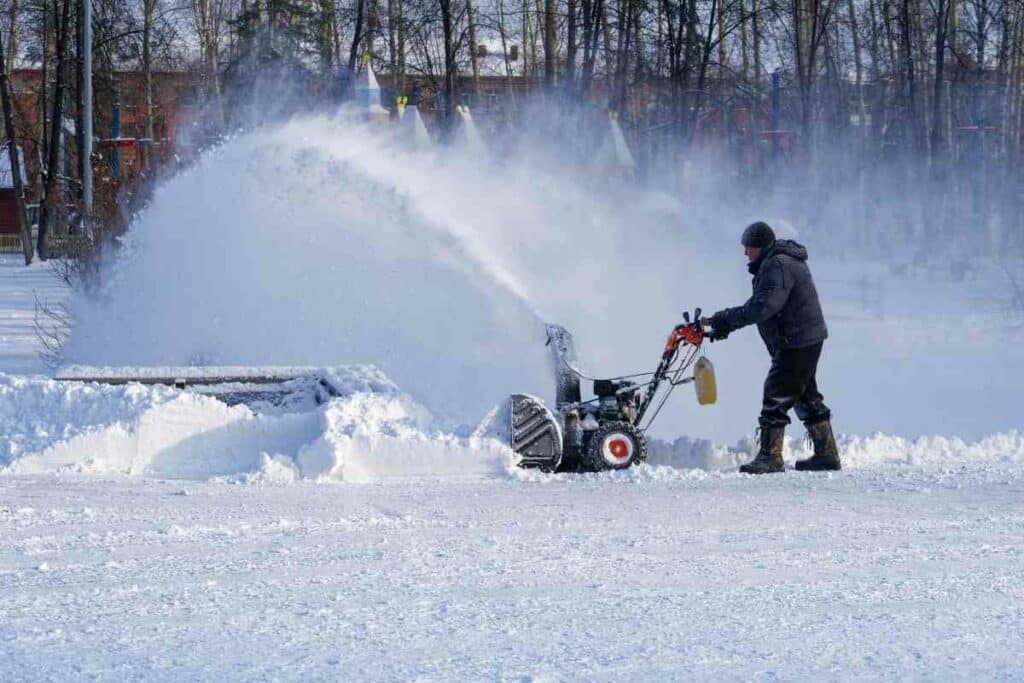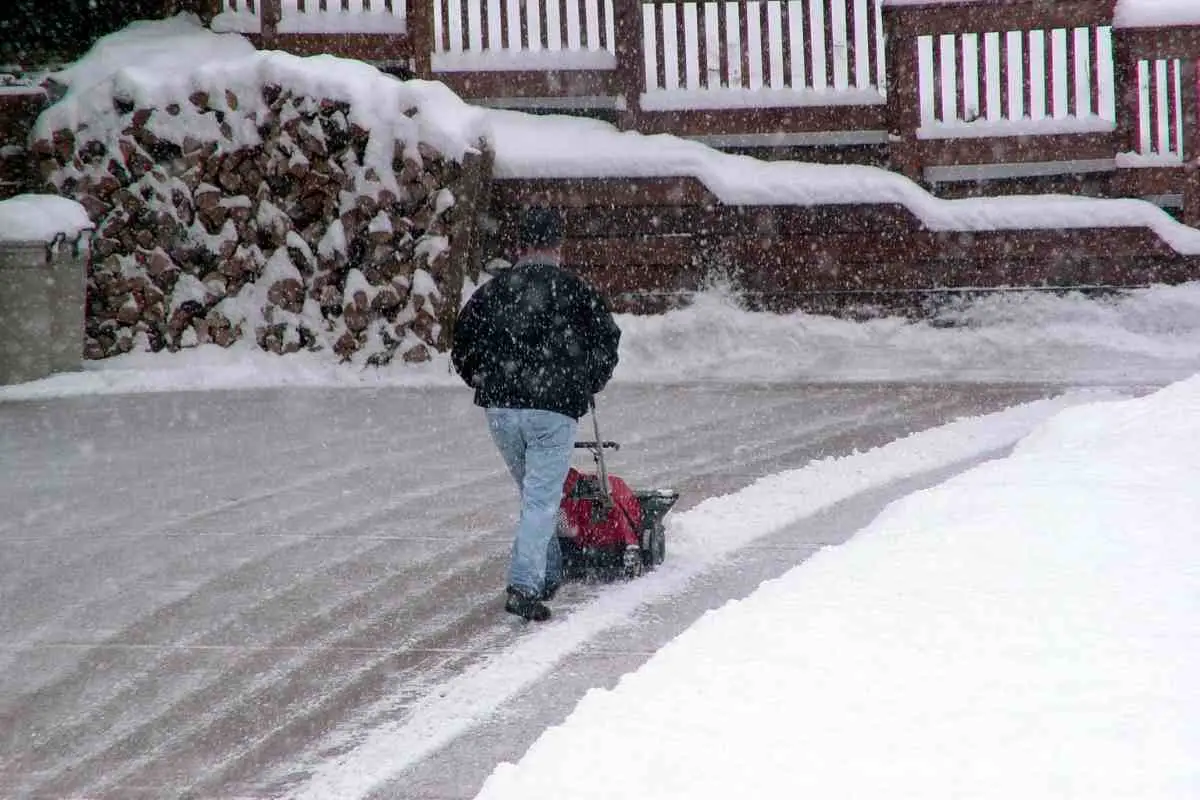Do you know how much gas a snowblower uses?
Most people don’t, but it’s important to consider so you know how much it’s going to cost you for the winter, and how much you’ll need to do your driveway.
Keep reading and we’ll tell you how much gas a snowblower is going to use.
How Much Gas Do They Hold
Not all snow blowers are going to need the same amount of fuel.
Some snowblowers hold more, and some hold quite a bit less.
Here’s a chart of some of the most common snowblower brands, and the capacity range of their snowblowers.
| Brand | Smaller Unit Capacity | Larger Unit Capacity |
|---|---|---|
| Ariens | 0.33 gallons | 0.95 gallons |
| Craftsman | 0.38 gallons | 0.5 gallons |
| Cub Cadet | 0.5 gallons | 1.25 gallons |
| Husqvarna | 0.58 gallons | 0.71 gallons |
| Troy-Bilt | 0.5 gallons | 1.25 gallons |
The average fuel capacity for a snowblower is about 0.5 gallons which would be good for single or double car driveways.
If you have a smaller driveway and a larger snow blower, you’re going to need to fill your snowblower up more often, and vice-versa for a smaller snowblower and a bigger driveway.
But what does that mean in terms of how much fuel it uses?
Most snow blowers use 0.4 lbs per Horse Power / per hour. One gallon of fuel contains 6.5 lbs of fuel.
Let’s use a 5-horsepower snow blower with a 0.5 gallon capacity as an example.
Half a gallon’s worth of fuel will have 3.25 lbs of fuel. And since it is a 5-horsepower snowblower, you multiply 0.4 lbs per HP by 5 to equal 2.
The final equation will look like this:
3.25 lbs of fuel / 2 = 1.625 hours of running time.
A single-car driveway with less than a foot of snow will take approximately 20 minutes to snow blow, which means you can snow blow your driveway seven times on one 0.5 gallon tank of gas.
Other Considerations

There are a few other things to consider when wondering how much gas a snowblower is going to use.
- Your location: If you live in Florida, your snowblower will very likely use 0 gallons of gas in its lifetime. If you live in any of the northern states, you will probably be using your snowblower from October until March.
- The type of snow: Light fluffy snow isn’t going to take nearly as long to snow blow, even if there’s a foot of it. You’ll be able to finish your driveway much faster and use less gas than you would for the super-compact “snowman-making” snow.
- The area you are snow blowing: The example was given for a one-car driveway, but if you have a two-car driveway, or a multi-car driveway, or a really long driveway, you are going to use a lot more gas to clear the area. You may even need to refill several times depending on how big or long your driveway is.
- The type of snowblower: If you don’t want to deal with gas, you can also opt for an electric snowblower. They come with the advantage of not having to pay for gas, or even spend time refueling and stabilizing gas, but you will have to work around the extension cord to run these.
What Type of Fuel Do They Need
The type of gas a snowblower uses is very important.
The first thing to consider is whether your snowblower is a 2-stroke engine or a 4-stroke engine.
Not too many snow blowers use a 2-stroke engine anymore, but if you do have an older snowblower with a 2-stroke engine you’ll need to mix your gas with oil.
Each snowblower will have a different ratio of fuel to oil, so refer to your snowblower’s manual before you mix the two.
Keep In Mind – If you have a 4-stroke engine, you won’t need to mix the oil into your fuel, but you will need to change your oil once a season.
Ideally, snowblowers need fuel without ethanol in it, but that can be pretty hard to come by.
The fuel at gas stations has about 10% ethanol, specifically the 87% octane gas you can find most commonly at gas stations.

Higher-grade gasoline with less ethanol and more octane will burn cleaner in your engines and prevent less build-up, but the 91% octane gas also comes at a higher price.
If you can find it, and it’s pretty rare and probably out of the way, E0 gas, which contains 0 Ethanol, is the best choice for a snowblower.
Some gas stations will also have diesel fuel available. This is the worst option for snowblowers and should be avoided.
How To Buy Gas For a Snowblower
No, please don’t walk your snowblower to the nearest gas station, there’s an easier way!
Start by getting yourself a gas can if you don’t already have one.
A cheap gas can will do just fine, but to make your life a little easier while trying to refill your tank in the cold, opt for one with a flexible nozzle so you can position the spout before you start pouring.

Gas cans with a wide base are also an upgrade.
If you’re a little clumsy, or prone to knocking things over, traditional gas cans can easily be knocked over if they aren’t full.
This is not only a waste of gas and a big mess, but spilled gas is a huge environmental hazard.
Bring the gas to a gas station to fill it.
Remove it from your vehicle, place it on the ground, and fill from there. When you’re done filling, put the cap back on, load it back into your vehicle, and bring it home.
You can even add a fuel stabilizer to your gas can if there’s room so you can save gas for later.
Just make sure if you are going to add a fuel stabilizer to do it before the 30-day mark.
Now you have stabilized fuel ready for a 4-stroke snowblower, a 2-stroke one would still need oil!
How To Store a Snow Blower
If you’ve spent any time around small motors or auto shops, you may have seen or heard of a fuel stabilizer and wondered what it was.
Over Time – Gas and oil attract moisture that can lead to acid build-up. It takes between 60 and 90 days for the acid build-up to become a problem, so if you store your snowblower from spring until late fall or early winter, your snowblower might not run properly when you need to remove the snow from your driveway.
You can’t fix old fuel, and you’re going to have to drain that out of your snowblower to dispose of it, but you can start fresh.
When you start fresh, mix fuel stabilizer into your fuel.

Adding a stabilizer extends the life of your fuel from 60-90 days to at least 6 months, even up to 2 years.
After you add the fuel stabilizer, run your snow blower for a couple of minutes so it has a chance to run through your entire machine.
Yes, it is an extra step, but it’s a small price to pay to protect the fuel you have in your snowblower.
Final Thoughts
The amount of gas a snowblower uses depends on many factors.
By understanding the power of your snowblower, and knowing what a traditional winter looks like in your area, you’ll have a much better idea of how much gas your snowblower will need.
To reduce wasted fuel from long-term storage, stabilize your fuel and choose a gas can that is less likely to spill.
This will help reduce your fuel costs next winter!
